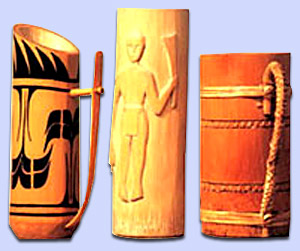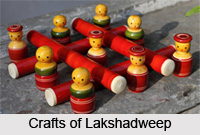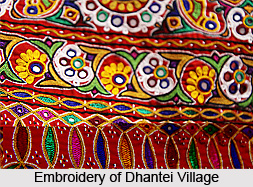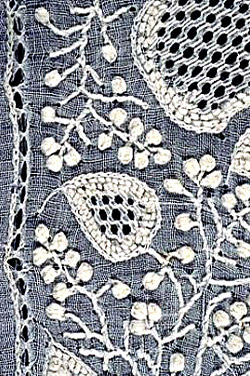 Chikankari is an ancient from of white floral embroidery that is intricately worked with needle and raw thread. This form of art has been the delight of king and commoner alike. It is centred mainly in the northern heartland of India, namely Lucknow, the capital of Uttar Pradesh. The word `chikan` is probably a derivative from the Persian word `chikin` or `chikeen` which means a kind of embroidered fabric. In all probability the word chikan is used for the white floral embroidery that Mehrunnissa brought with her from Persia.
Chikankari is an ancient from of white floral embroidery that is intricately worked with needle and raw thread. This form of art has been the delight of king and commoner alike. It is centred mainly in the northern heartland of India, namely Lucknow, the capital of Uttar Pradesh. The word `chikan` is probably a derivative from the Persian word `chikin` or `chikeen` which means a kind of embroidered fabric. In all probability the word chikan is used for the white floral embroidery that Mehrunnissa brought with her from Persia.
Lucknow has been the city of old gardens and palaces, fine architectural conceit mosques, temples and ageing monuments. This city was once so favoured by European travellers that it was popularly called the Constantinople of the East.
Lucknow also has the distinction of being today, the cusp of a very beautiful, very aesthetic form of white floral embroidery. The art of Chikankari has been practiced in Lucknow for almost more than two hundred years. However, it did not originate in Lucknow rather it flourished in the Mughal Court at Delhi in the 16th and 17th centuries.
Origin of Chikankari
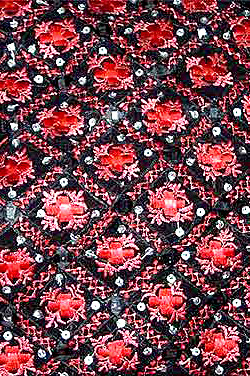 The origins of chikan are shrouded in mystery and legend. According to few historians chikan is a Persian craft that evolved in the Mughal Court of the Emperor Jahangir by his beautiful and talented consort Nur Jahan. The queen was a talented embroiderer. The king was pleased with this ethereal, white floral embroidery that it was soon given recognition and royal patronage. Workshops were established wherein this embroidery was practiced.
The origins of chikan are shrouded in mystery and legend. According to few historians chikan is a Persian craft that evolved in the Mughal Court of the Emperor Jahangir by his beautiful and talented consort Nur Jahan. The queen was a talented embroiderer. The king was pleased with this ethereal, white floral embroidery that it was soon given recognition and royal patronage. Workshops were established wherein this embroidery was practiced.
Mulmuls or muslin garments were most appropriate for the hot, tepid climate of Delhi. There are some very fine Mughal miniatures that depict the Emperor Jahangir in white flowing Muslim garments. Historians believe this could be chikan. After the decline of the Mughal Dynasty, the artisans and craftsmen scattered across the length and breadth of India. Some settled in West Bengal, so for some time chikan flourished in Kolkata, though it is no longer practiced there. Some fled to the Northern state of Awadh and settled in the royal courts of the descendents of Burhan ul Mulk a Persian nobleman, who had found favour with the last Mughal king, Bahadur Shah I and was appointed as the governor of Awadh.
There are, however, other opinions on the origin of chikan embroidery. According to few historians, there is evidence of embroidered muslin apparel depicted in the famous paintings in the Bagh Caves and Ajanta Caves dating back to the 9th century A.D.
In the modern period the art of Chikankari has survived the loss of royal patronage and has suffered deeply at the hands of commercialization, yet it has managed to stay alive as a tribute to the skill and will of the crafts persons who have handed down this technique from one generation to another.



